Malindi, the African dream
We travel along part of the Kenyan coastline to Che Shale for refuge.
When we think of Kenya, safaris always come to mind, but not the image of its beaches. Its coastline is exceptional, with miles of fine white sandy beaches surrounded by coconut groves and lapped by the incredibly warm waters of the Indian Ocean.
Malindi is a haven for those in search of relaxation, uncrowded places where life revolves around the sea and the beach. It’s a hideaway destination, traditionally chosen by jet-setters such as Richard Burton, who sought the privacy that few places can offer like Mailindi, specifically in the bay known as Che Shale.
Situated on one of Kenya’s most pristine beaches, this idyllic lodge is recommended as a base camp. The perfect place to live an African experience. Isolated, surrounded by lush vegetation and just a few metres from the unspoilt Che Shale beach, this magnificent property consists of a main house and a guest house.
The property is set on a three and a half hectare estate bordering an endless pristine beach. The house has four bedrooms, four bathrooms and is surrounded by porches.
Built with local natural materials, it is configured for living with all the comforts you can get in such a brutally wild place. It has the charm of an authentic castaway hut on the edge of the sea, and it is here that our African adventure begins, where we will learn first-hand about Swahili culture.
From here we will visit the best safaris, temples, visit the national parks, we will recommend you where the best places for water sports are, the main cities, original activities such as seeing a snake and crocodile farm, as well as visiting the spectacular coastline.
A few metres from the farm there is a kite surfing school, and the Che Shale hotel, designed after the traditional “bandas” hidden among the coconut trees. They have a bar and restaurant specialising in international cuisine where we highlight the local seafood as one of the specialities of the local gastronomy.
Welcome to a “Memories of Africa” experience. A place of inspiration where the fashionable concepts of “eco slow” and “eco chic” reach their maximum exponent, but in a natural and authentic way…they invented it.
An ideal getaway for families or groups of kiters.
If you need more capacity, you can book “bandas” at the Hotel Che Shale, which can accommodate around 18-25 people.
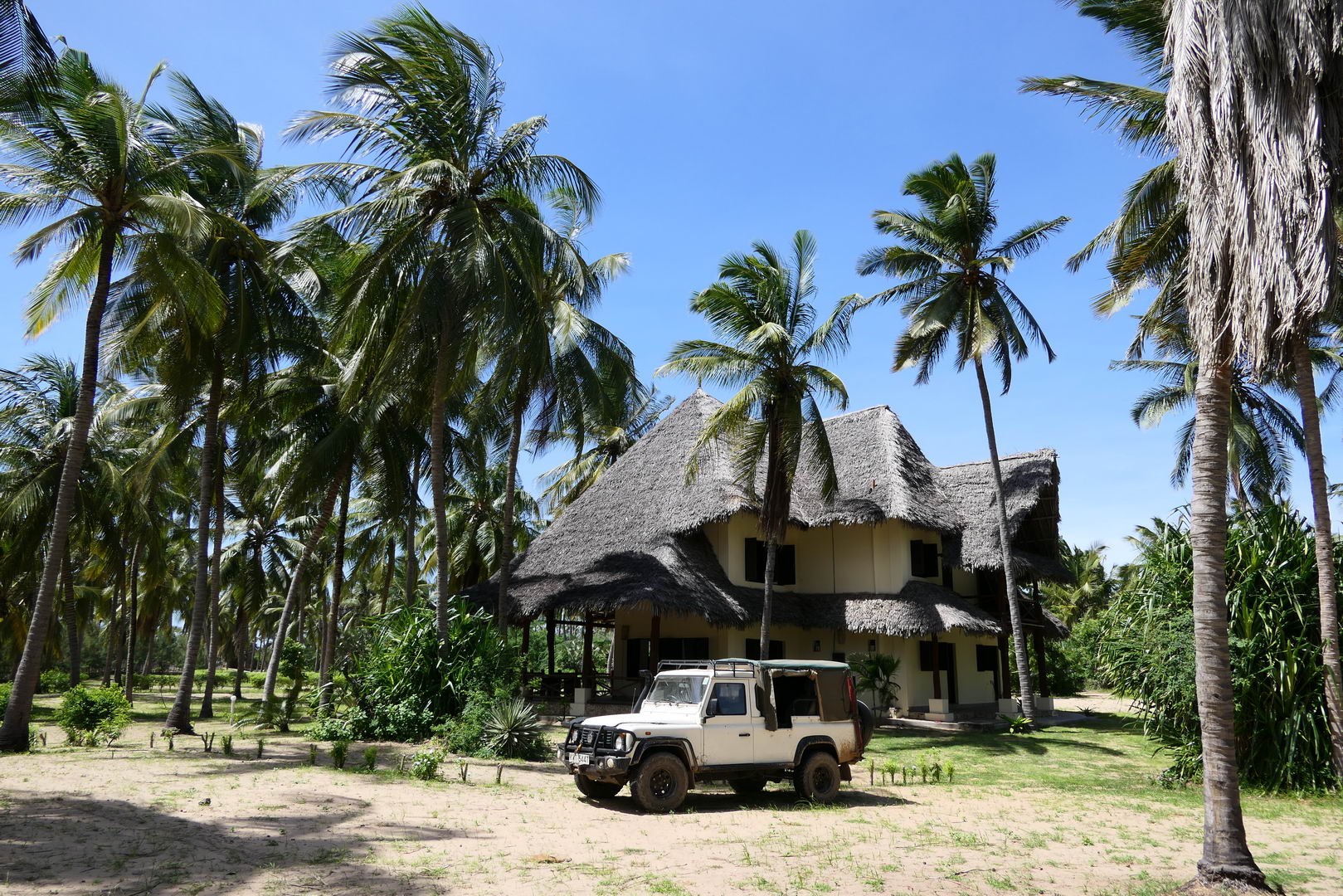
DESCRIPTION OF THE HOUSE
The main house has 2 bedrooms, one bedroom on the main floor with 2 beds and bathroom. The other bedroom is upstairs with king size bed and en-suite bathroom.
The main house has a kitchen and common areas.
The guest house has 2 bedrooms. One of the bedrooms has 2 beds and the other has 1 king size bed. Each bedroom has its own bathroom. It has a nice porch.
A total of 4 en-suite bedrooms, 6 beds and with an accommodation capacity for 8 persons.
The house has service staff who live on the property. Breakfast service, transfers, local daily guide, home chef, etc… are offered. Lunch and dinner service on request.
ACCESS TO THE ESTATE
The access to the farm is by a dirt track of about 5 km. It is a sandy road made of coconuts where you can already foresee the enormous particularity and beauty of this place with zero visual or acoustic pollution. Few places have the personality of Che Shale. The house offers the possibility of hiring reliable local guides with whom to organise any activity, visit or transfer. A team can pick you up at the airport and take you directly to the house.
NEAREST HOTEL & RESTAURANT
Che Shale is a beautiful hotel situated on Malindi Bay, right in front of a 5 kilometre long beach. Unlike other Kenyan luxury resorts, it is a small beach hotel built with natural materials. The rooms are arranged in “bandas” (castaway-style huts), built from woven palms, mango wood, doum palms…). Their location is very isolated and they are the only accommodation in the area. Ideal as a complementary accommodation for larger groups and a meeting place for socialising. We can help you to coordinate bookings.
http://www.cheshale.com/
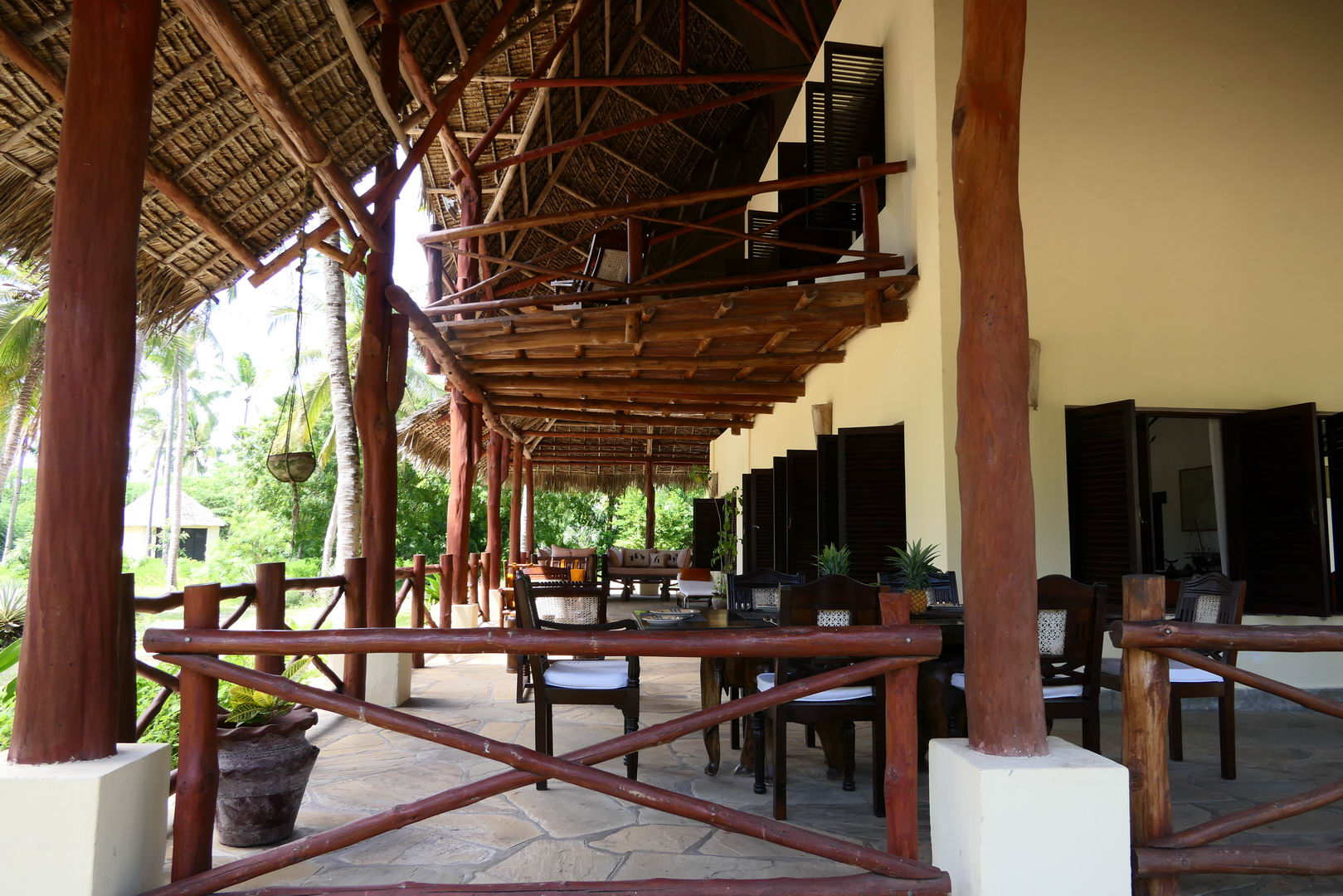
ACTIVITIES FOR AN UNFORGETTABLE STAY
1 OR 2 NIGHT SAFARI
The best plan is to combine days of beach and sports with a safari of 1 to several days in some of the most spectacular natural parks in Africa.
The southern part of the country is the most visited, as it is home to the most important parks and the area with the most vegetation (let’s not forget that Kenya is known worldwide for its safaris): Amboseli (at the foot of the Tanzanian Mount Kilimanjaro), the immense Tsavo East and West (22,000 km2) and further west the Masai Mara Reserve (an extension of the Tanzanian Serengeti). So a trip of sport and relaxation (its beaches are impressive and little frequented) is a fact, we can combine diving in the Kenyan Barrier Reef, kitesurfing in Che Shale, surfing in Watamu, with relaxation in its beaches, visiting its biggest reserves to make a safari easily.
Our guide and on-site coordinator organises all the safaris in the area, and we can arrange tailor-made tours according to your stay and preferences.
www.jambosavannah.com
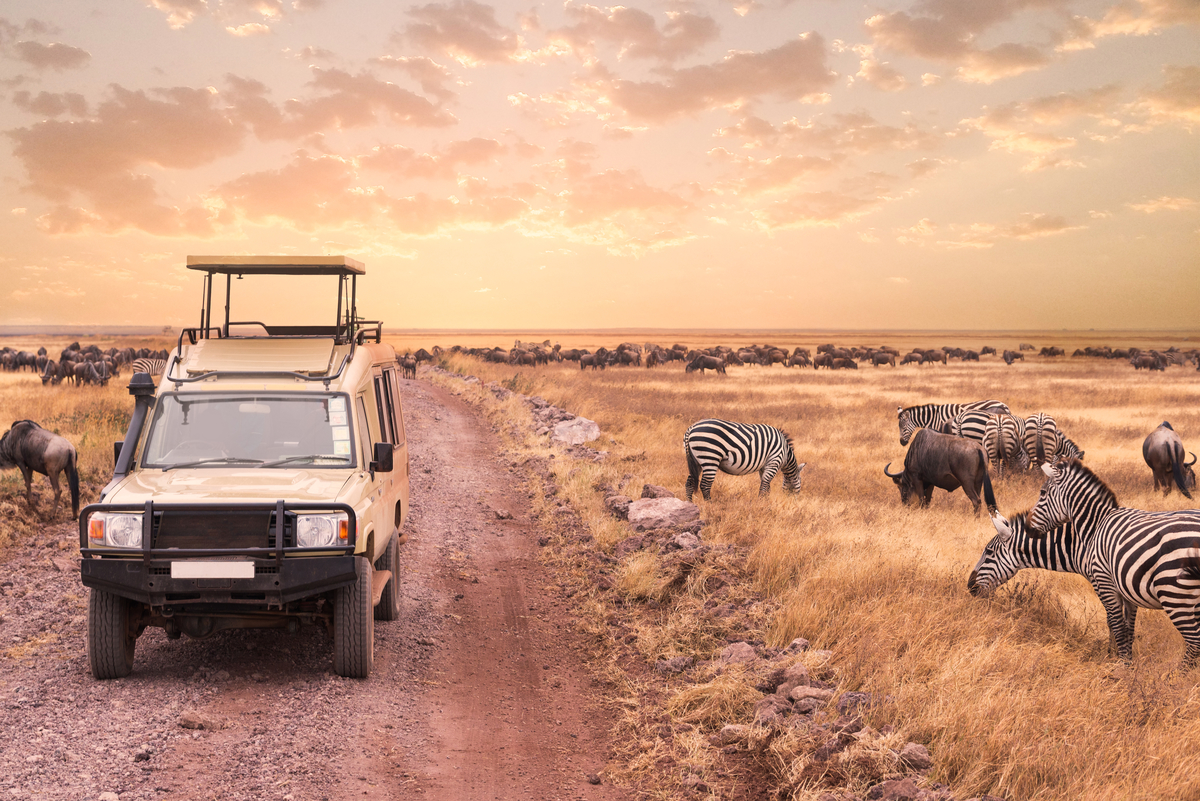
CHE SHALE AND KITESURFING
Che Shale is a beach with little tourism, ideal for relaxing, enjoying the sea and water sports, especially kitesurfing. With 300 days of wind per year and an average of 16 knots, the best months are July to September and January to April.
Che Shale offers 5km of unspoilt, warm water, bay-shaped beach protected by a reef with a rock-free sandy bottom and no coral, making it suitable for kitesurfing at both low and high tide. With flat and shallow water there are no other kiters around.
There are 2 winds depending on the wind season.
The Kaskazi is present from December to April. It is usually an average of 16 knots.
The Kuzi blows from June to September and is usually stronger and can reach up to 30 knots, making Che Sale a unique kitesurfing spot.
It has an excellent kitesurfing school, where you can book lessons and even complete programmes.
Undoubtedly one of the most important destinations in Kenya to practice this discipline, due to its optimal wind and sea conditions, both for beginners and experts.
Possibility of organising kitesurfing lessons.
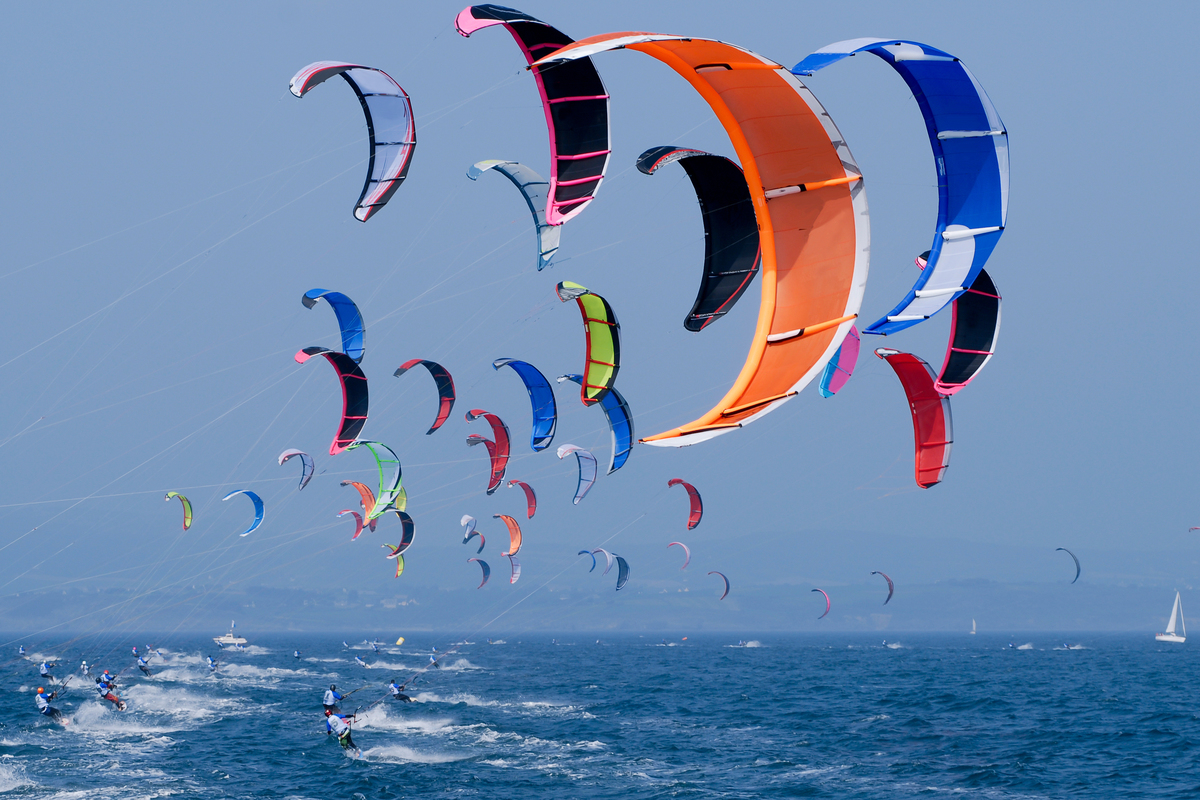
DIVING
There are four protected marine areas, the Kiunga Marine Reserve (islands of Kiwayu, Paté, Manda and Lamu), the Malindi National Marine Park, the Watamu National Park and the Kisite National Marine Park (islands of Funzi and Wasini).
For proximity we recommend the Watamu Marine Park, located on the south coast, close to the second city of the country, and about 4 hours drive from the Tanzanian border.Diving Season: From December to the beginning of April the diving is optimal in the Watamu Marine National Park. In the Malindi Marine Park at the same time, the prevailing wind makes the water, red with mineral sediments from the Galana River, spoil the visibility of the dive site.
April to the end of June is the rainy season. Diving is bad everywhere, but good for safaris (quite a few hotels closed).
June to November: Diving in Malindi. The prevailing wind changes and allows diving in this area. On the other hand, the sea is very rough in the Watamu area where visibility is poor.
For snorkelling we also recommend the Watamu Marine Park. Located on the south coast, close to the second city of the country, and about 4 hours drive from the Tanzanian border.
What species you will find: Lionfish, rhino moray eels, turtles, crocodile fish, nudibranchs, black and white tip sharks and countless other species inhabit this area of the Indian Ocean. Whale sharks and manta rays can be seen between December and March.
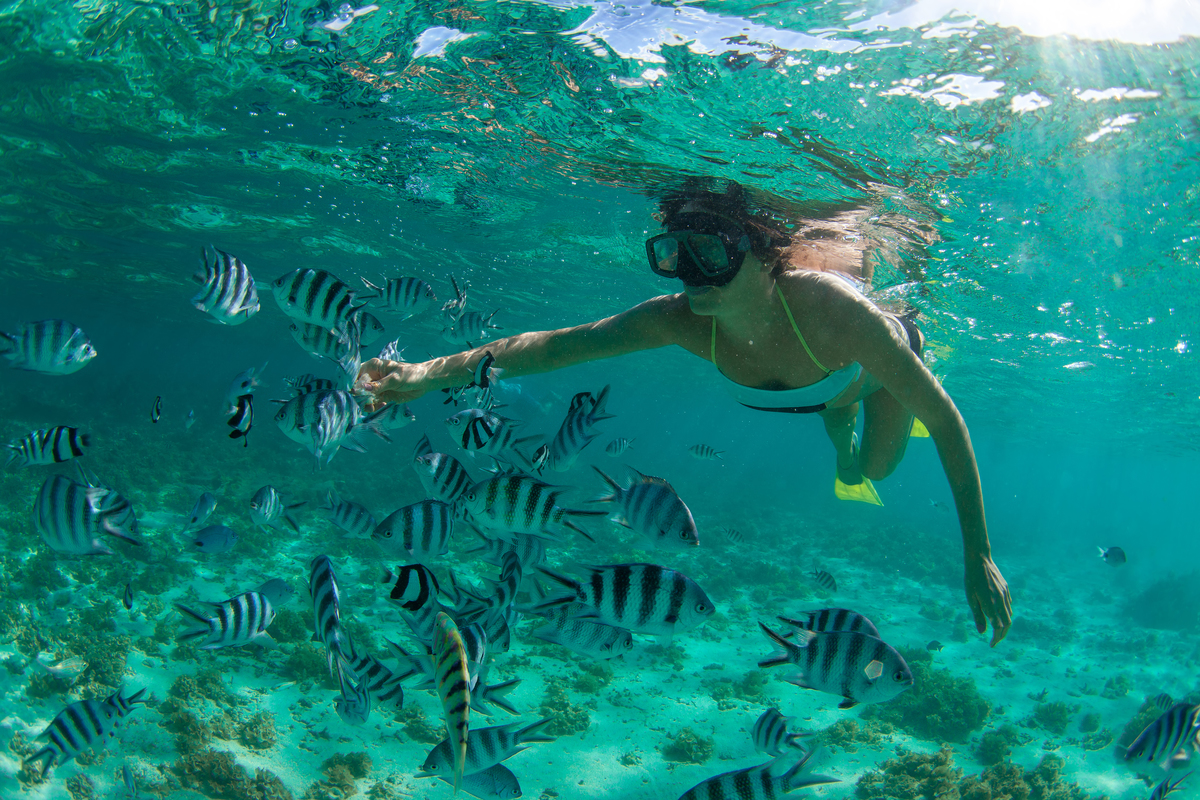
SURF
Surf lovers will also find their paradise in Watamu, which has the best waves in the country thanks to its coral gardens.
Malindi is the best place on the Kenyan coast for surfing, particularly at Watamu. The outer reefs attract great swell all year round, peaking between June and September. Surfers should bring their own boards as there is no equipment hire service.
Surf lessons can be arranged.
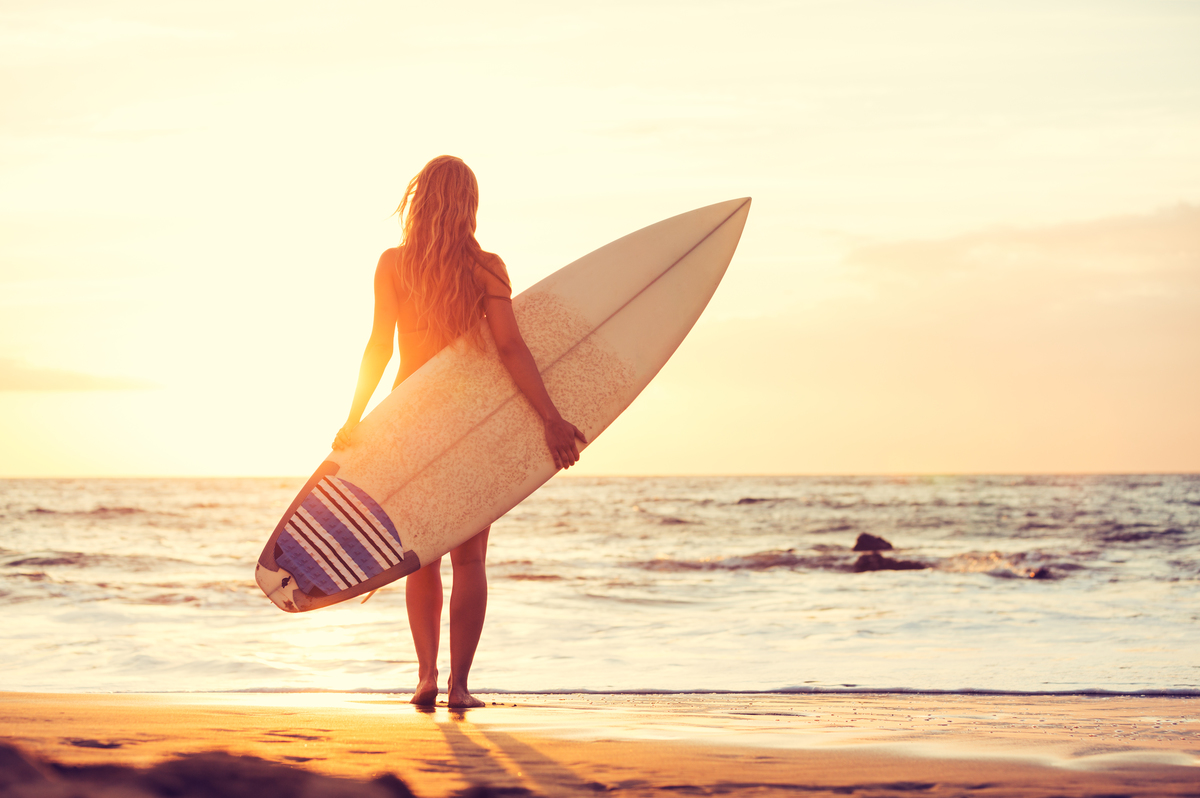
CULTURAL EXCURSIONS
MALINDI
The town of Malindi is located 20 kms south of Che Shale. It is a Muslim town with a vibrant life of its own. Malindi has gradually become a renowned tourist destination for the many places of interest that can be visited, such as the fish market, the arts and crafts market, the old market and the Vasco da Gama Pillar. The nearest wildlife park is a 3 hour drive from the Che Shale.
Malindi exudes exoticism, not only for its beaches, but for its architecture. The area displays classic examples of Swahili architecture.
It is 120 kilometres northeast of Mombasa. Malindi serves as a link to a domestic airport (1 hour from Nairobi), and a road between Mombasa and Lamu. The nearby resorts of Watamu and the Gedi ruins are located to the south. The mouth of the Sabaki River lies to the north of Malindi. The Watamu and Malindi Marine National Parks form a continuous protected coastal zone to the south.
MOMBASA
A must-see is the city and harbour of Mombasa. Wandering the streets of the old town, breathing in the local rhythm, strolling through the market and hiring a local guide are some of the best ways to enjoy a full day away from the beach.
There are several options such as visiting a local school in the Che Shale community itself and learning about the Giriama culture (their cuisine, harvesting, prayers, music and dances) through a cultural centre.
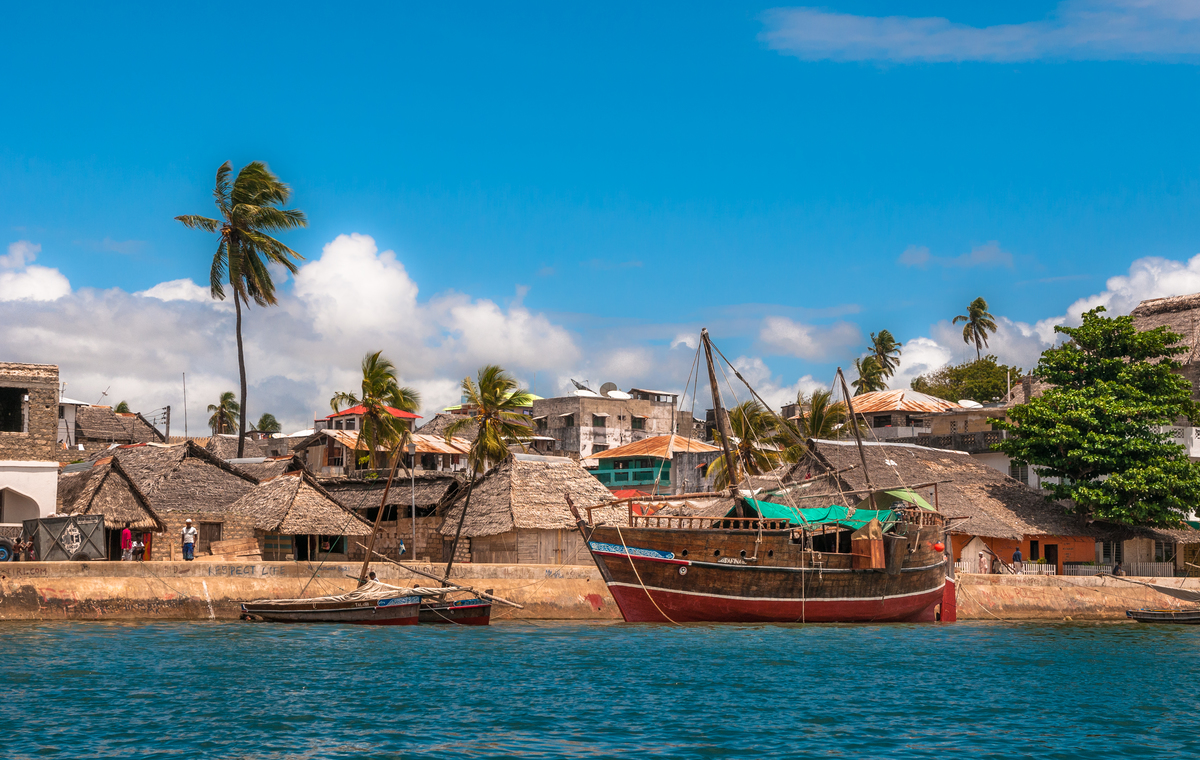
NATURE EXCURSIONS
Visiting the mouth of the Sabaki River for hippos, seeing the marine parks of Watamu and Malindi by diving and/or from a glass-bottom boat or visiting a snake and crocodile farm are some of the many options that are within a relatively short distance from Che Shale.
VISIT THE LAMU ARCHIPELAGO
It is located on the northern coast of Kenya, close to the Somali border. According to Unesco, it is the first Swahili settlement in East Africa. In the past it was the cradle of Swahili culture, the fruit of the best of each people, Arabs and Persians landed here and traded the riches of Africa.
The port of Lamu and the ports of Mombasa (Kenya’s largest), Zanzibar, Dar es Salaam, Comoros and others once saw the arrival and departure of huge ships laden with riches to trade with the rest of the world. Arabs and Persians mixed with the coastal tribes, giving rise to the Swahili culture, a word that comes from the Arabic sawahil, meaning coast, which today gives its name to the Swahili language. The Swahili character of the Kenyan people, cheerful and hospitable, was born out of this intermingling.
In Lamu you will find tranquillity, good walks and relaxation, no monuments… you can eat good quality fish and seafood.
GASTRONOMIC TOURS
In all the coastal area, it is possible to eat magnificent fish, fresh and well cooked without problems, seafood, Italian cuisine has also taken root in the coastal area due to the massive presence since the 60’s of Italians who settled in the area, created their hotels and businesses, and attracted the Italian public. Italians are regular visitors to Kenya.
Kebab is typical, as is rice and flour in what is a national dish par excellence.
There is the possibility of organising gastronomic tours of the most emblematic places to eat in the area.
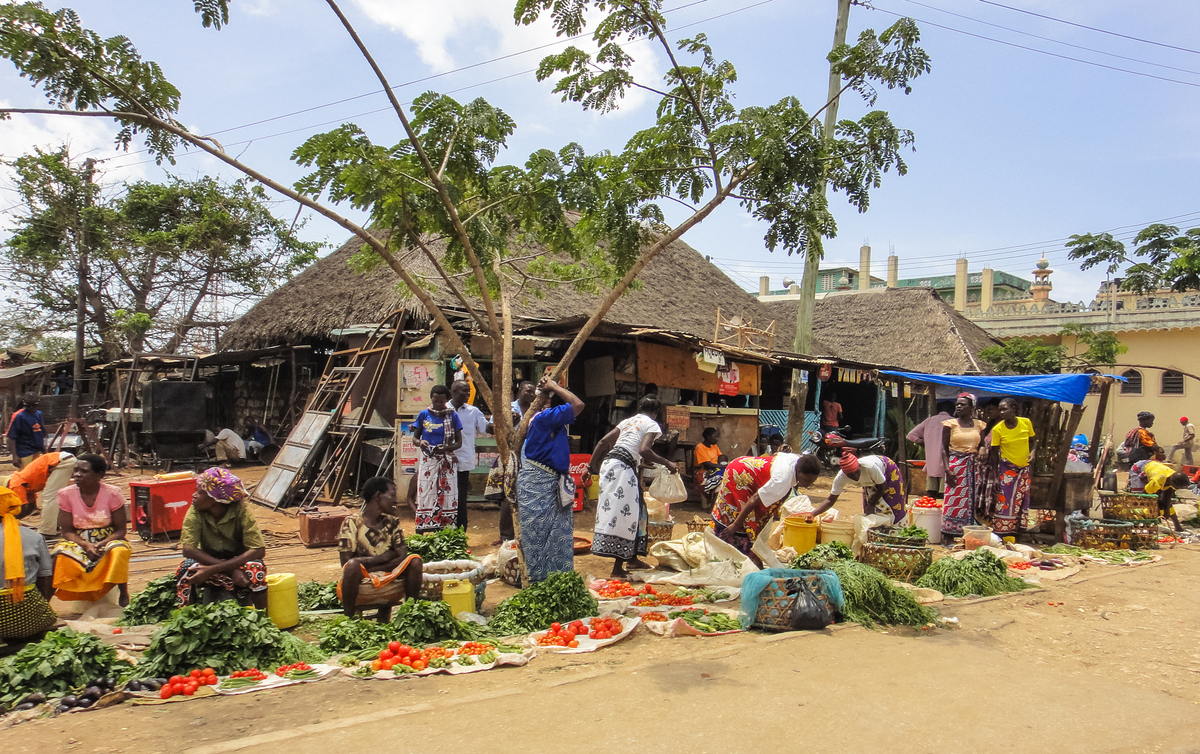
DISTANCES AND TRANSFER RECOMMENDATIONS
The lodge is in Che Shale Bay.
We recommend flying to Nairobi and then taking a domestic flight to Malindi (1 hour).
Another option is to fly to Mombasa and drive to Che Sale (approximately 3 hours on an acceptable road). Interesting route to appreciate the beauty of the place.
Malindi is 30 minutes from the lodge.
Watamu is a 1 hour drive.
The journey from the coast of Watamu, the southernmost marine reserve, to the Tsavo Reserve is 2h30 by car, but the trip is a spectacle in itself, as we will drive on film-like roads, we will see the sunrise, (in the parks it is recommended to enter at 8h at the latest) and we will be able to feel the rural areas, see the small buildings in which the rural population lives, and the exuberant vegetation of the coastal strip that expands along the coast of the country.
South of Malindi Bay is Silversands Beach, surrounded by hotels, nightclubs, casinos, pubs, old mosques, golf courses and the Malindi National Marine Park. The northern part is characterised by its ravines, such as the so-called Hell’s Kitchen.
CLIMATE
The climate has an absolute influence on the natural cycles of wildlife, and choosing the right time of year can make the difference between seeing the most important animal species and large herds of herbivores, or not. Kenya’s climate is characterised by two types of wet seasons – the short rains (between October and December) and the long rains (between March and June). Most visitors prefer to avoid rainy periods because dirt tracks become muddy and some parks can be flooded, making traffic difficult.
The best time to travel to Kenya depending on the weather: in high season: between the months of July to October and December to February.
Temperature:
Kenya’s climate is classified as tropical.
At an average temperature of 26.3°C, April is the hottest month of the year. At 24.5°C on average, July is the coldest month of the year.
PRACTICAL INFORMATION
Visa: You can apply online via the website. It can take approximately two weeks to be granted. http://www.kenyaembassyspain.es/visados/
Flights: First leg to Nairobi. There are cheap flights to Malindi (1h).
Currency: Kenyan Shilling. You can go with some money already changed from Spain but you will find banks there to make the transaction.
Vaccinations: Make an appointment at the International Vaccination Centre. Vaccinations against Malaria, Hepatitis, Tetanus and Yellow Fever are recommended, especially in the rainy season when mosquitoes are prevalent, although they are not compulsory. Consult web.http://www.vacunas.org/kenya/
Travel insurance: It is worth taking out short-stay insurance. Allianz Global Assistance, Catalana Occidente, MundiEspaña or Intermundial are recommended.
Days needed: To get to know this country well, many days would be necessary, but with a one-week visit we will be able to see the Watamu coast and the marine park, do some sport, go on safari and get to know the villages in the area.